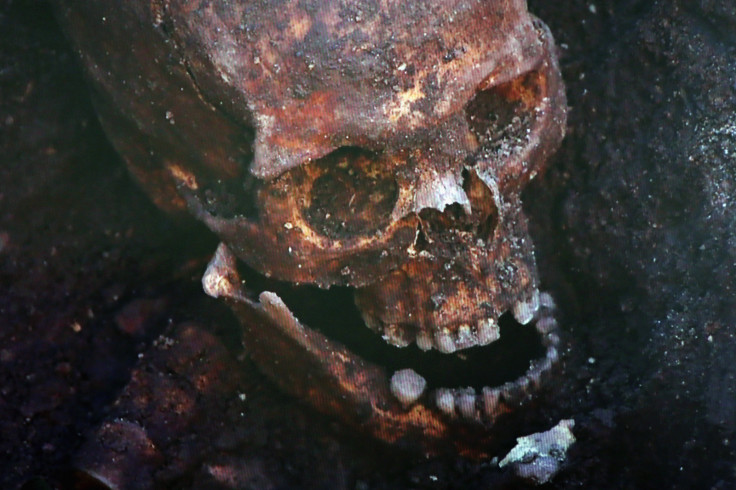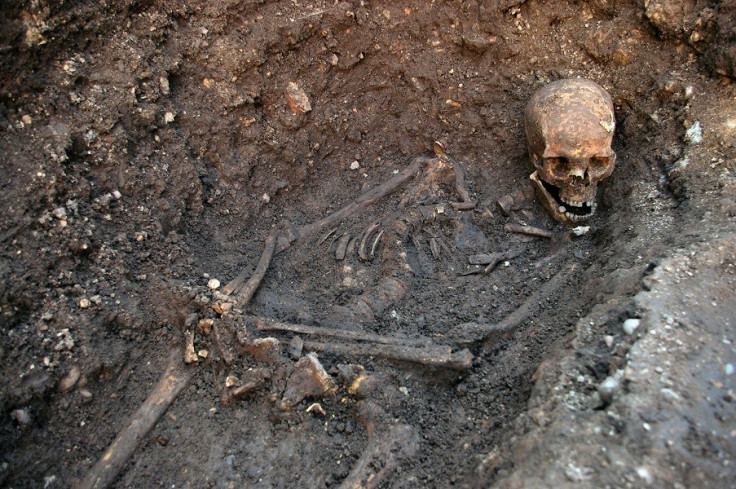King Richard III: Forensics Reveal Skull Injuries and 'Lost' Helmet Killed Plantagenet Monarch

A modern forensic analysis of King Richard III's skeletal remains has revealed a blow-by-blow account of the most likely cause of the former monarch's death.
Three injuries – two to the skull and one to the pelvis – are likely to have killed the Plantagenet king, according to new research by the University of Leicester. The study shows that Richard may have lost his helmet, leaving him defenceless.
The remains of King Richard III, the last English monarch to die in battle, were found under a car park in Leicester in February 2013 by University of Leicester archaeologists.
Lead archaeologist Richard Buckley, from the University of Leicester, told BBC News that the skeleton belonged to Richard III "beyond reasonable doubt".
Now, forensic imaging and pathology teams at the university have used body scans and micro-CT imaging of the former king's bones to analyse trauma to the 500-year-old skeleton, to find out which wounds were fatal.
Richard died on 22 August 1485 at Bosworth Field in the last decisive battle of the Wars of the Roses, which symbolises the end of the Middle Ages in England.

The results, published in The Lancet, show that Richard's skeleton sustained 11 wounds at or near the time of his death. Nine were to the skull, clearly inflicted in battle and suggesting he had removed or lost his helmet. Two were to the rest of his body.
"Richard's injuries represent a sustained attack or an attack by several assailants with weapons from the later medieval period," said study author Sarah Hainsworth.
"The wounds to the skull suggest that he was not wearing a helmet, and the absence of defensive wounds on his arms and hands indicate that he was otherwise still armoured at the time of his death."
Professor Guy Rutty, who co-authored the study, said: "The most likely injuries to have caused the King's death are the two to the inferior aspect of the skull—a large sharp force trauma possibly from a sword or staff weapon, such as a halberd or bill, and a penetrating injury from the tip of an edged weapon."
He added that Richard's head injuries are consistent with some near-contemporary accounts of the battle, which suggest that Richard abandoned his horse after it became stuck in a mire.
However, the two postcranial injuries - including the one to the pelvis - may have been inflicted after Richard's death. Had he been alive, he would have been wearing late 15<sup>th century armour that would have prevented such wounds, the researchers said.
Previously, it has been suggested that the pelvic wound may have been a "humiliation injury" – as it was likely to have caused by an upward thrust of a weapon through the buttock.
Dr Heather Bonney, of London's Natural History Museum, who was not involved in the research, said the study provided "tantalising" glimpses into the validity of the historic accounts of Richard's death, which were edited by the Tudors in the 200 years afterwards.
© Copyright IBTimes 2025. All rights reserved.






















